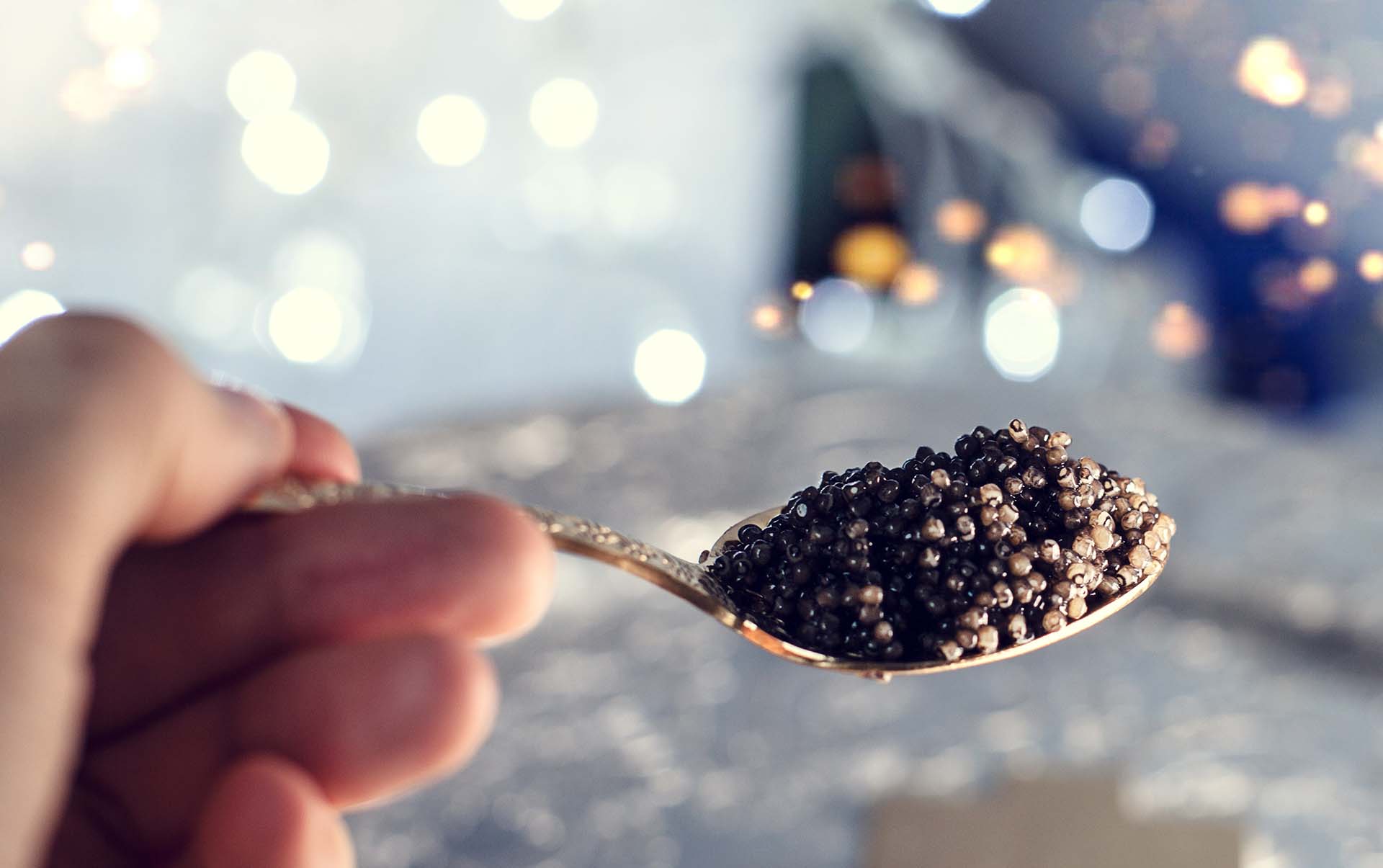
Exploring Kaluga Caviar – What Makes This Delicacy Unique?
Are you wondering why fish roe, especially kaluga caviar is so special? Learn all about this delicacy that will make every bite a unique experience.
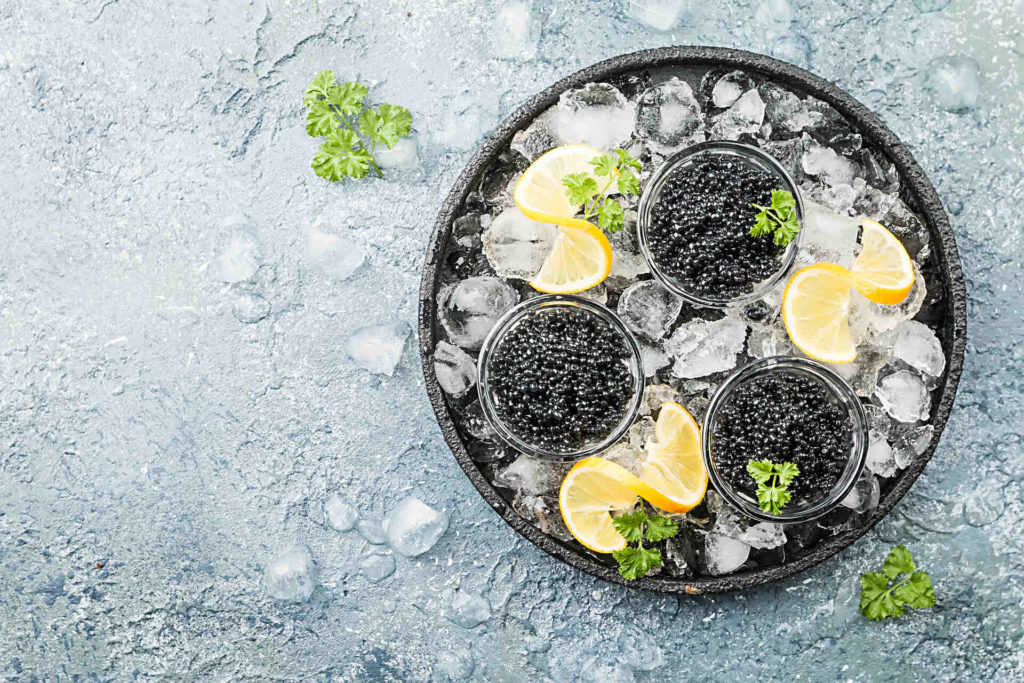
Renowned for its exquisite flavor, delicate texture, and unparalleled elegance, caviar has been known as one of the most exquisite delicacies for centuries. However, did you know that you can find many different types of caviar? If you are new to the world of this luxurious dish, we can help you explore the wide range of flavors and textures – and find out which suits you the most.
Caviar is one of the most luxurious delicacies in the world, typically reserved for those with refined taste buds and deep pockets. Made from unfertilized sturgeon fish eggs, it is an expensive but highly cherished dish consumed worldwide.
As for the history of caviar, it is considered that the origin of the word we use today is Persian, and the first mention of this dish is connected to Greek and Aristotle in the fourth century B.C. Throughout history, it has become one of the favorite dishes among royals, from British kings to Russian tsars. As time went by, it became a well-known and highly appreciated delicacy all over the world.
Although the sturgeon species have been present since the age of dinosaurs, it is now close to extinction – and overfishing is the main cause. It has led to the rise of sturgeon and caviar farming and the official regulations of international commerce in sturgeons of all species.
Determining the number of caviar types depends on the criteria used. More often than not, this delicacy is classified by the species it comes from – and there are plenty of them. However, the four most well-known varieties can be distinguished – beluga, sevruga, kaluga, and osetra.
However, keep in mind that higher demand for these varieties caused overfishing and, therefore, a steady decline in different sturgeon populations. Luckily, the beginning of this century has brought more sustainable farming practices, where farmers are able to cultivate different sturgeon spices in a controlled environment.
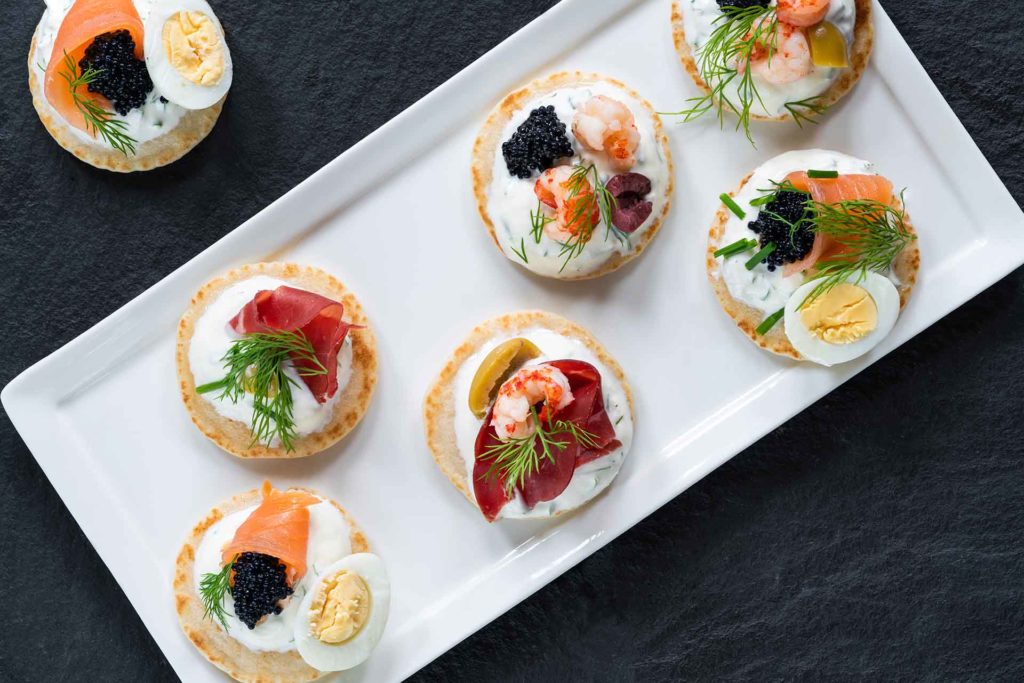
One of the most sought-after varieties of this delicacy, beluga caviar is also one of the rarest. It originates from the Huso Huso (beluga) sturgeon, which can be found in the pollution-free Caspian Sea – which allows it to maintain the most authentic taste. It has a buttery and creamy but mild flavor, with notes of hazelnuts and color ranging from black to light gray.
How much is caviar? With a price between $200 and $300 per ounce, this type is the most expensive one, and it’s not just for its exquisite flavor and texture. Due to overfishing, Huso Huso is classified today as a critically endangered species, which has led to different import bans and heightened the rarity of this delicacy. On the other hand, keep in mind that the female beluga sturgeon has a very long maturation cycle (about twenty-five years). That means that farming can be extremely expensive, which affects the final price of the product. However, the luxury it implies is one of the caviar’s appeals and the reasons why people like it so much.
Almas caviar is a sub-type of beluga caviar, and it comes from the sixty to hundred years old albino Iranian beluga, found only in the South Caspian Sea. As with people, albinism in belugas is not such a common condition, and a female fish with partial albinism would not produce true Almas caviar. The rarity, naturally, affects the price of this product – on average, one kilo (or 2.2 pounds) of Almas caviar can cost around $25,000-$35,000, sometimes even more. The albinism affects the color of roe, as well – as opposed to the typical dark-colored beluga, Almas caviar is usually golden to white-colored.

Osetra caviar is also among the most popular varieties, with many different flavor variations. It originates from the osetra sturgeon, which comes from a sturgeon species native to the Caspian Sea. The taste of the caviar depends on the location of the sturgeon at the moment of harvesting, the region they originated from, their diet, and the time of the year the roe was harvested.
In general, the most common words people use to describe the osetra type are smooth and complex, while different variations can show a buttery, briny, nutty taste and sometimes even bring hints of citrus. This roe variety is typically compared to beluga. Still, note that osetra roe is usually much smaller and can be colored differently. In most cases, the color of this caviar type ranges from dark brown to light gray and golden.

Sevruga sturgeon, also known as starry sturgeon, is another critically endangered species native to the Caspian and the Black Sea, as well as the Aegean Sea. This fish produces small to medium gray roe – with lighter and larger pearls being more valuable. Opposed to two previous varieties, keep in mind that this species cannot produce golden roe shades.
As for the taste, it is known for its butter and nutty notes, typically saltier and less intense than other varieties, with a clean and creamy but firm texture – you’ll be able to enjoy the so-called pop of each perl once it comes in touch with your taste buds. The price of this variety ranges between $50 and $120 per ounce, on average.
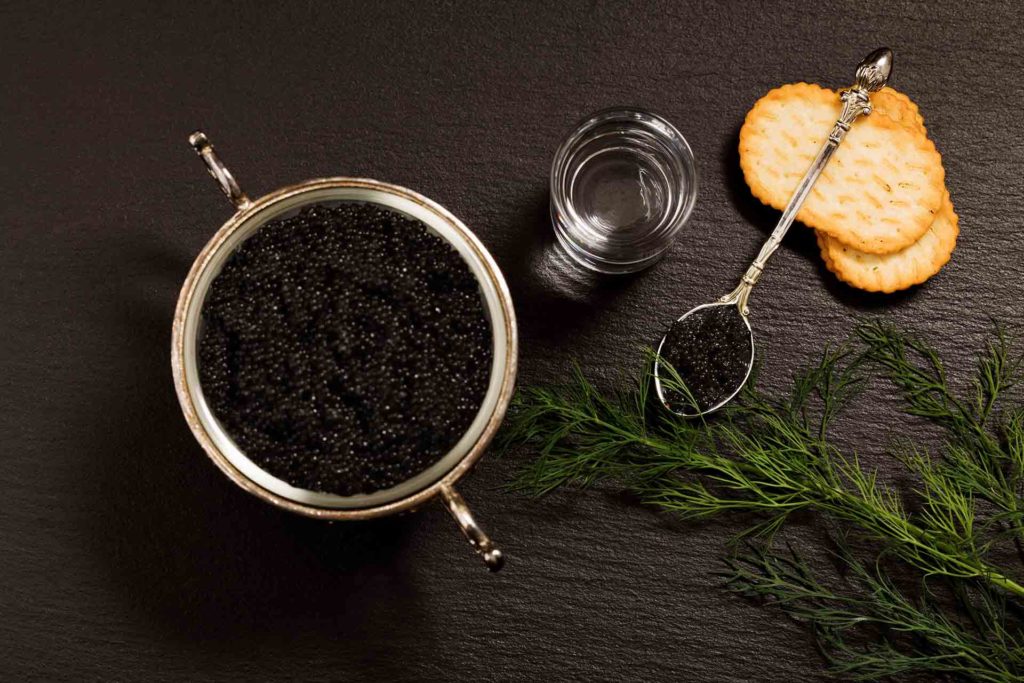
The kaluga species is close to the beluga, which translates to the similar texture and flavor of these two varieties. Kaluga surgeons can usually be found in the Amur River basin and are often referred to as river beluga. Kaluga typically produces large eggs, with taste often described as earthly, buttery, robust, and firm in texture.
It’s suggested you enjoy it on its own, but if you find the flavor too intense for your liking, you can always pair it with dry toast, blinis, unsalted crackers, or make some of the best caviar dishes. The price ranges between $65 and $85 per ounce, on average.
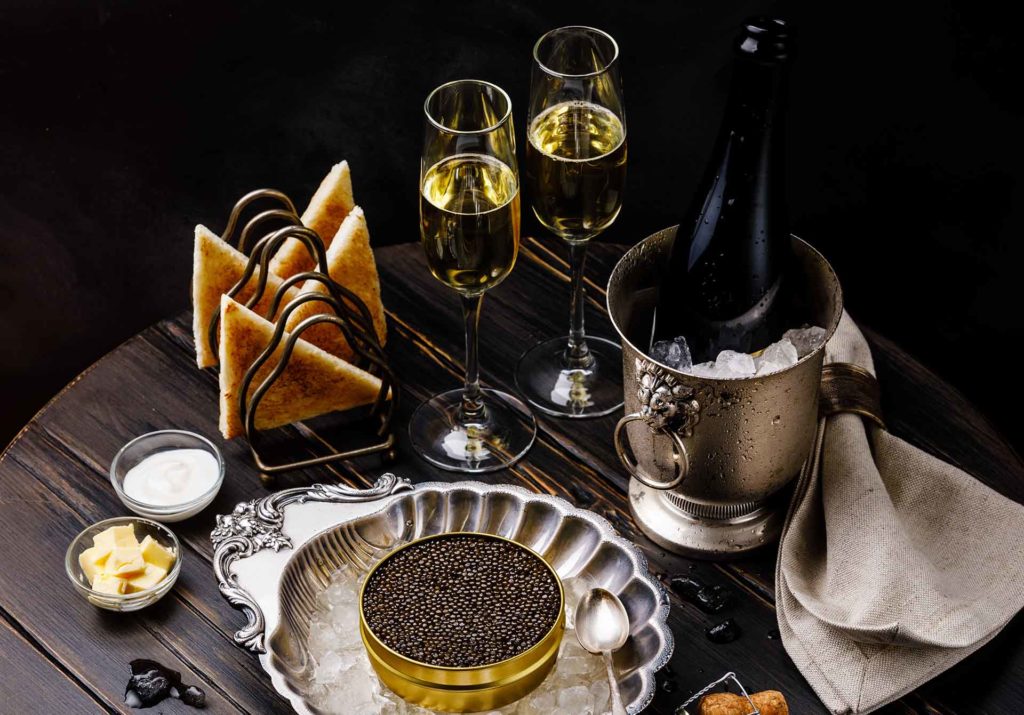
Although the most popular, previously described varieties are not the only ones you can find in the market. For example, if you’re looking to purchase caviar, you’ll also be able to find one made from hackleback, the smallest freshwater sturgeon species in the USA. This dark to light gray and shimmery roe is now considered to be a more than suitable alternative to the varieties from the old continent, with deep and nutty flavor – and a lower price range ($35-$45 per ounce).
Sterlet caviar is another variety native to the European ground since sterlet sturgeons can be found in the Aegean, Black, Caspian, and Azov seas. It can also be found in the rivers of Siberia. This roe is of a small variety and tastes similar to sevruga caviar. There have been cases where dishonest manufacturers mislabel their products, marking sterlet as true sevruga roe. Its price is typically a little lower than sevruga (between $50 and $100 per ounce).
Siberian sturgeon roe shares a similar price range. This delicacy comes from a species that is native to Siberian river basins but can also be farm-raised. It has a dark, glossy appearance, a firm texture, a creamy, earthy, and nutty taste, and a hint of sweetness, similar to beluga roe.
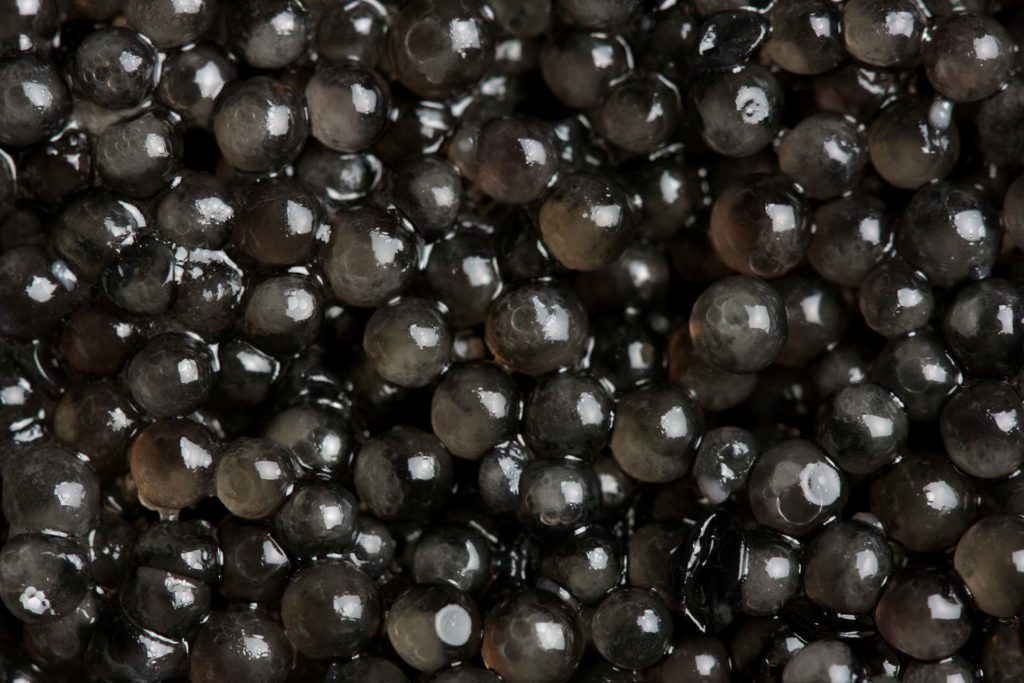
What is caviar – and what is not? Authentic caviar is made from a specific type of roe – sturgeon roe – and other varieties can qualify as this luxurious delicacy. Although present and, moreover, highly popular on the market, eggs that come from species such as salmon, paddlefish, or trout cannot be labeled as caviar. Therefore, the term red caviar, while often used for salmon roe, is not correct, as it’s not of sturgeon origin.
However, that doesn’t mean these fish roe varieties are not worth a try. Take a look at the table below to see the most popular varieties of non-sturgeon products and their main characteristics:
| Species | Color | Flavor | Size |
| Bowfin | Black | Mild | Small to medium |
| Salmon | Orange to deep-red | Creamy, with a slight bitterness | Large |
| Paddlefish | Gray | The long-lasting, earthy taste | Small to medium |
| Capelin | Mandarin orange | Mild | Small |
| Carp | Orange | Light | Small |
| Trout | Orange | Mild, slightly salty | Medium |
| Whitefish | Golden-yellow | Subtle | Small |
Each caviar shop and its manufacturers can use different processing methods, and which one they choose will determine the quality of the final product. Therefore, this delicacy can be calcified by more than just the fish species it comes from, and one of the ways to do so is to consider the methods used in its processing. In this case, it can be:
When you want to buy caviar online or in the shop, it’s also important to know how the company you’re considering grades the quality of its products. In today’s industry, it’s common for manufacturers to use a specific grading system based on the roe color and size. According to it, there are five different varieties of caviar.
Select is considered the lowest grade, and it means that the product offered is typically below average. Classic grade, on the other hand, is used for eggs that are close to average when it comes to their size and color. The next grade is named Royal, and it usually implies larger grains and lighter colors. Larger pearls come from the older sturgeon, which, combined with a lighter color that is less common, results in a higher price than Classic grade delicacy.
The Supreme grade signifies an even rarer, high-quality product. The most expensive variety is the so-called Imperial or Golden caviar, which refers to the product containing the lightest color and largest eggs – and you’ll rarely see this variety of caviar for sale. However, keep in mind that this grading system says nothing about the taste of the product – you may find, for example, that you like lower-graded products much better than the one that has the highest grade.

Whether you are a caviar connoisseur or a curious beginner, this delicacy can offer something for everyone. After all, each variety we mentioned earlier possesses its own distinct characteristics, providing a multitude of choices suitable for different preferences.
However, you won’t be able to determine the right fit for you unless you try them for yourself. If you are wondering, Where can I buy caviar near me, don’t limit yourself to the specialty food shops in your close proximity. If you’re looking for a top-quality product, you can simply order caviar online through our caviar online store. Contact us now, explore the varieties we have in our offer, select your caviar order – and shop for this exquisite delicacy today.
Blogues connexes

Are you wondering why fish roe, especially kaluga caviar is so special? Learn all about this delicacy that will make every bite a unique experience.

What makes osetra caviar unique? From its rich flavor to its luxurious texture, learn all about this delicacy and enjoy every bite.

Wondering whether eating fish roe has any health benefits? Learn all about caviar nutrition and how it can boost your well-being.
Plan du site
Société
K&cie Sàrl
Route de Crassier 61
1299 Crans-près-Céligny
TVA CHE-383.472.711
Contatez nous
Droits d'auteur 2023, K&cie Sàrl, Tous droits réservés.
Développé par Made Online